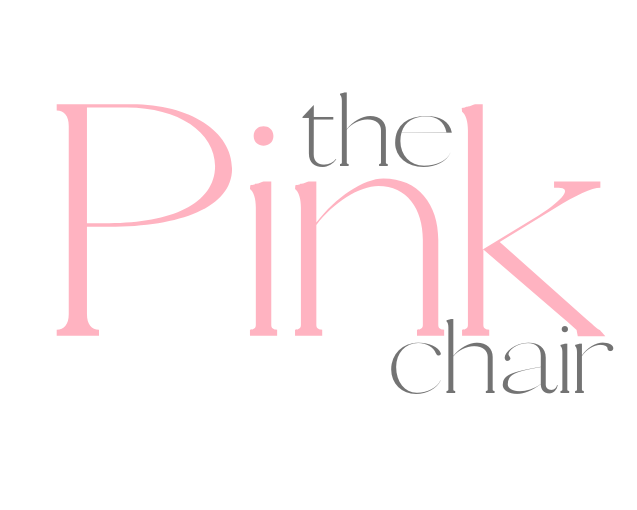|
Fixin' some crooked nails |
|
Over the years I have taken some fabulous shaping classes. and some not so fabulous ones too. I have have had "Apex, Lower Arch, Upper Arch, C curve" and all the parts and things explained to me 100 times or more I'm sure. And just when I think I have it figured out, I realize I don't, when my set is finished it isn't perfect and it isn't symmetrical. How bloody friggin' frustrating! You do all the work of customizing all the forms, measuring one finger against the next, checking length, apex placement, thickness and all the things only to still have them not be perfect. It took me a lot of years to realize that your nail is not going to look the same from all angles. That is in fact impossible. Each finger on your hand and every clients hand is different. Some nail beds will be longer, flatter, wider or maybe scooped, all on one hand. Each knuckle on each hand will be slightly different, maybe one goes slightly left or right, maybe one was installed almost backwards. The fact is each finger every time is different. Our job is to do our best to make all the knobby, crooked and odd shaped nails look more uniform. NOT PERFECT, but pretty. Sculpting with forms can be frustrating, this I understand completely. Tips can also be frustrating, sometimes even more so, because you don't have all the options for customization you do with a form. Each of these tools in our nail tech toolbox are needed, and each of them come with their own set of issues and frustrations. So lets get into! Years ago I learned tips when I took my initial training. Were they frustrating? you bet! Were the tip thick and hard to deal with? Absolutely! Did we have lots of options? Nope, One, we had one option, Square. If you were lucky your distributor carried natural and clear. Did they have different options for C-curves? Nope, they were pretty flat. If you wanted other tip options, you had to order from out of country. The tip options now are CRAZY! They come in all kinds of shapes, sizes, colours, and lengths. It's no wonder they are starting to become so popular. When using tips on clients there are still things that you have to watch for, techniques you need to master, and you still need to understand proper structure. Sure, that tip is the basis for your creation, but if you put that bad boy on crooked...it's trouble, and a nightmare to fix. Tips still need to be adjusted to fit each different type of nail, where you run into trouble is with the "ski jump or spoon" nail. These are tricky with tips. If your client has a pronounced natural apex, also a special technique. Nail grows downwards? Special technique. You get what I'm saying? Even if we are using the full cover tips that are available today. They don't fit each type of nail, and these full cover tips cannot be customized for perfect fits like some of the other tips and forms on the market. Don't get offended if you use them, it's a just a fact. There is not a perfect fit out there for lots of nails when we are using tips, they can all only be customized to a certain degree. I honestly wish I would have had all these options when I first started this journey. Maybe I wouldn't have bailed on the whole tip thing so soon. It would have made my career so much more pleasant for grad and wedding season, I wouldn't have spent all the time sculpting, just to have them chew them off 48hrs later when their event was over. With all the tip options out there, it's important to remember all the parts of the nail we still need to look at when applying these tips. The lower arch should always be parallel, this is a big one. The tips should fit comfortably on the nail, if we squish the tips onto the natural nail we can risk Onycholysis, because the tip is trying to spring back into it's natural shape, and pulling that nail with it. We still need to know where the proper placement is for the Apex on the length of nail we are creating. The biggest thing is that we really shouldn't be putting a XXL tip of any kind on a short bitten nail. The natural nail should be able to easily and comfortably support the length. Adding too much length is just asking for trouble. Not everyone can be a XXL Nail Baddie, even if they want to, even if they are willing to pay twice as much. It's not healthy for their nails, and you are actually risking your reputation as a pro when they Sh!t talk you because, they hurt, they broke, they lifted, they ate them, they will always throw you under the bus to their friends. I would rather be the tech that says no and here's why, this way when they are talking trash, people know you are a professional and won't put up with any BS. This leads me to forms and sculpting. So much customization can go into each and every form. Depending on the length and shape your client wants and the over all shape and length of their natural nail bed, applying the forms can often take 30+ minutes. Its a talent to be able to eyeball exactly the perfect cut to the center of the form, and to place each form at the right height to have all 10 apex and lower arch match. When I first was taught form placement there was only one way. Straight out. No exceptions, every time same thing and it didn't matter what the natural nail looked like. So needless to say, we created these great chonky lil chicklets. Boy we thought we were the GOAT. Now years later I have learned all kinds of techniques to help my clients walk away with a much sleeker more refined enhancement. And ya sometimes their finger just do like that, but now I know how I counter act that little quirk with some simple customizations. Now for all of my salon shapes, I know that I need to tip my form up slightly, unless it's a stiletto, then it goes down slightly. To slightly tip up to the form, thins out the free edge and gives the "spine" a more even visual, it also makes you drop the sidewalls down slightly, so you have a little more room for adjusting the lower arch on each finger. I know that release cuts in the right spot will narrow up the form and create a much more sleek looking nail. The tip in the form also drops more product in the stress area, decreasing the chance for breaks and stress fractures. Forms have also come a long long way in the years that I have been in the industry. We have 100's of choices. I prefer to work with a form that has a reasonable length. I never use the longer stiletto forms, too much form for clients to bash and smash and make everything crooked after I worked so hard to get them on right. I want a thicker form, but not like cardboard, I need to be able to adjust the centre. STICKY is not negotiable. They must be sticky AF I would rather have to pick paper stuck to my clients finger than deal with forms that are constantly popping open. I also think that those stupid black and gold form should be illegal. but that is a whole other opinion piece. One of the biggest differences I find between tips and forms is the number each you need. If I am sculpting, having two different styles of forms in my desk is lots. I can customize each one. Now tips I feel are different. I need to have different tips for different types of nails, then different shapes, then different sizes, and different colours, tips with wells and then full cover tips and all the colours and shapes and lengths and all the things. At the end of the day, what ever we choose to use, we need to remember that it is literally impossible to make the nails on anyone look perfect from all angles. or hands are crooked in different ways from all angles. We correct it one way, only to discover it is crooked from a different way. So when you are cruising the internet, admiring all those perfectly altered images, remember that. Remember that even if you can see flaws (we always can) that our clients can't. They love our work, our conversation and counselling skills. The nails are a bonus. As long as you can make the nails stay, create a look they love, make their hands look prettier than before, you have done your job, and they are thrilled. Don't judge a tech on if she uses tips or forms, each technique has it's own skill set. If you sculpt, you most likely have no idea how to make a tip fit difficult nails, and the same goes for those of you that prefer tips. You learn the tricks for your preferred method. One is not better than the other, one doesn't take more or less skill than the other. Pick your preferred method and master it. Stay in your own lane. Help a fellow tech out if they ask about your technique, but don't make them feel like less because what they do is different than you. There is never only one way, and even though we think our way is the right way, it's not for everyone. Be kind with your words, to others, but especially to yourself. I hope all of you have the best week ahead ❤️ Thanks to all of you that stayed along to the end and enjoyed a cup of coffee {or 3) with me this Sunday. I appreciate all of you! And love sharing my experiences with you. Until next week, be good to yourself 🥰
XO Kellie |
Your finger do like that...
By Kellie Walton













